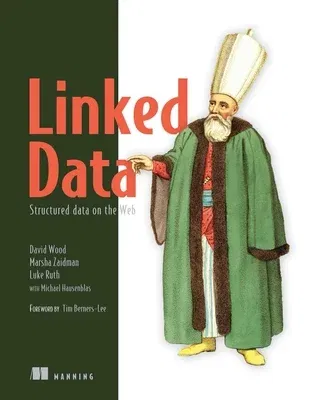Summary
Linked Data presents the Linked Data model in plain, jargon-free
language to Web developers. Avoiding the overly academic terminology of
the Semantic Web, this new book presents practical techniques, using
everyday tools like JavaScript and Python.
About this Book
The current Web is mostly a collection of linked documents useful for
human consumption. The evolving Web includes data collections that may
be identified and linked so that they can be consumed by automated
processes. The W3C approach to this is Linked Data and it is already
used by Google, Facebook, IBM, Oracle, and government agencies
worldwide.
Linked Data presents practical techniques for using Linked Data on the
Web via familiar tools like JavaScript and Python. You'll work
step-by-step through examples of increasing complexity as you explore
foundational concepts such as HTTP URIs, the Resource Description
Framework (RDF), and the SPARQL query language. Then you'll use various
Linked Data document formats to create powerful Web applications and
mashups.
Written to be immediately useful to Web developers, this book requires
no previous exposure to Linked Data or Semantic Web technologies.
Purchase of the print book includes a free eBook in PDF, Kindle, and
ePub formats from Manning Publications.
What's Inside
-
Finding and consuming Linked Data
-
Using Linked Data in your applications
-
Building Linked Data applications using standard Web techniques
About the Authors
David Wood is co-chair of the W3C's RDF Working Group. Marsha
Zaidman served as CS chair at University of Mary Washington. Luke Ruth
is a Linked Data developer on the Callimachus Project. Michael
Hausenblas led the Linked Data Research Centre.
Table of Contents
- Introducing Linked Data
- RDF: the data model for Linked
- Consuming Linked Data
- Creating Linked Data with
- SPARQL--querying the Linked
- Enhancing results from search
- RDF database fundamentals
- Datasets
- Callimachus: a Linked Data
- Publishing Linked Data--a recap
- The evolving Web

